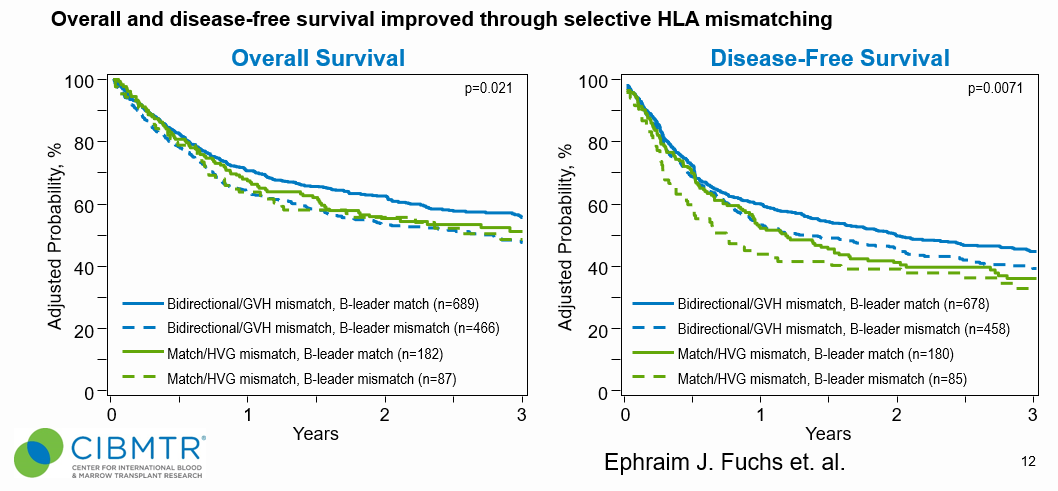The CIBMTR® (Center for International Blood and Marrow Transplant Research®) hypothesized that mismatching at various HLA loci may have additive effects in the context of haploidentical (haplo) hematopoietic cell transplant (HCT) with post-transplant cyclophosphamide (PTCy). This was based upon prior observations in HLA-B leader where matching lowered the risk of acute graft-vs-host disease (aGVHD) and treatment related mortality (TRM) in mismatched unrelated donor (MMUD) HCT (Petersdorf EW, et al., Lancet Haematol 2020) and in HLA-DRB1 and HLA-DPB1 where mismatching lowered the relapse risk in haplo HCT (Kasamon YL, et al., BBMT 2010, and Solomon SR, et al., BBMT 2018, respectively).
HLA locus-specific risks impacted clinical outcomes of haplo HCT using PTCy and found that HLA-B leader influences non-relapse mortality and survival, HLA-DRB1 mismatch in the graft versus host direction (GVH) impacts relapse and disease-free survival (DFS), and HLA-DPB1 mismatches influence overall survival (OS) and DFS. Multivariable models assessed transplant outcomes associate with 3 HLA factors: (1) B-leader dimorphism (MM, MT, TT) matching, (2) HLA-DRB1 mismatching in the graft-versus-host (GVH) direction, and (3) Nonpermissive HLA-DPB1 mismatching in the GVH direction.
The study examined transplantations of 1,434 patients between 2008 and 2017 who underwent T-cell-replete haploHCT with PTCy for acute leukemia or myelodysplastic syndrome (MDS). The diagnosis distribution was 58% AML, 23% ALL, and 19% MDS. The median age was 54 and the range was 1 to 78 years old. The median follow-up was 12 months. In 43% of the recipients, marrow was the graft source and in 45% myeloablative conditioning was used.
The results showed HLA-B leader mismatching is a risk factor for non-relapse mortality (NRM) and worse OS and DFS. HLA-DRB1 or nonpermissive HLA-DPB1 mismatch was associated with reduced relapse and improved DFS.

